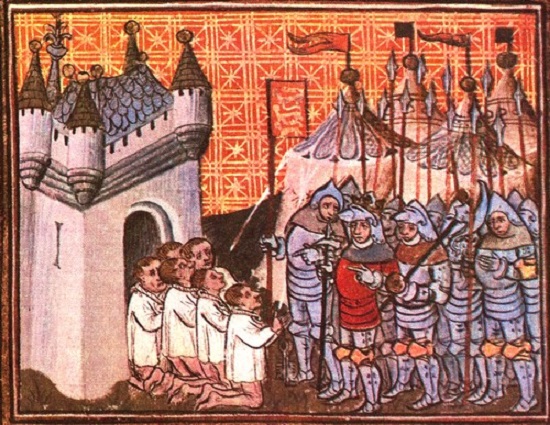
Besieged!

Introduction
The pictures below are from the period 1250-1500. They show the kinds of things that happened during a siege in the Middle Ages..
Study this webpage, then answer the question sheet by clicking on the 'Time to Work' icon at the top of the page.
Links:
The following websites will help you research further:
Medieval siege:
•
Basic description
• Shakespeare
on how to attack a castle - 'Once more unto the breach!' •
and
how NOT to attack a castle - 'Run Away!'![]()
![]()
An army prepares to set off to war.
.
1

An army camp during a siege.
The baggage wagons are on the outside.
The foot-soldiers' tents are in the inside ring, and the knights' tents in the centre.
Notice the guarded gate on the left, and the bar and gambling tables on the right.
2

An army would first try to take a castle by surprise, making a rush on the gate.
What different things are they doing to try to capture the castle?
What are the defenders doing?
3
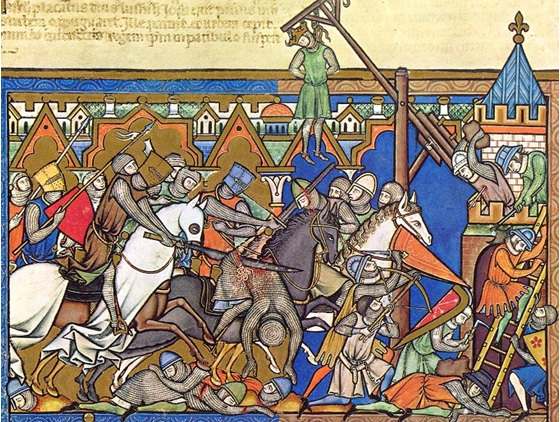
The siege.
What are the attackers doing?
Notice the siege tower on the left.
How are the archers protecting themselves from arrows being fired by the defenders on the walls?
What are the defenders doing?
4

As the siege went on, the defenders would become hungry and they often became ill. They would make surprise attacks from the castle, called sorties.
Notice at the top of the picture the trebuchet, a large machine for throwing rocks at the castle walls.
5
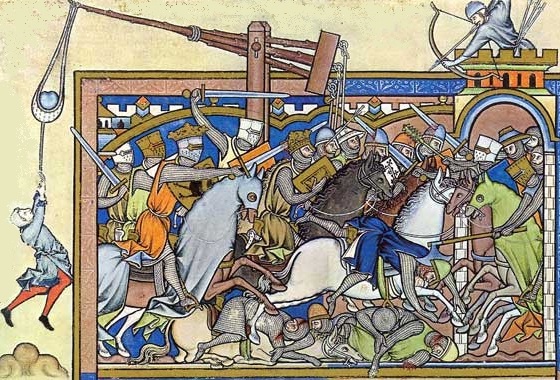
'Once more unto the breach, dear friends,' shouts King Henry in Shakespeare's play.
A breach was a gap in the castle walls made by the attackers. The attackers then rushed into the breach to try to take the castle. You can see in the picture what happened next.
6
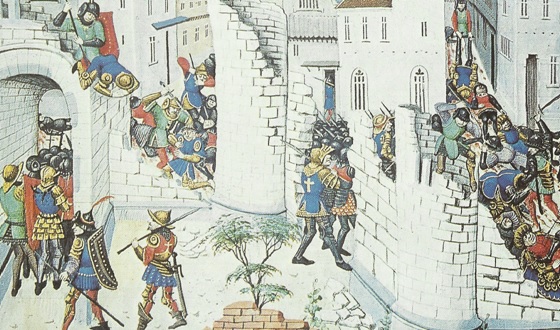
The attackers have defeated the defenders. What are they doing now?
7
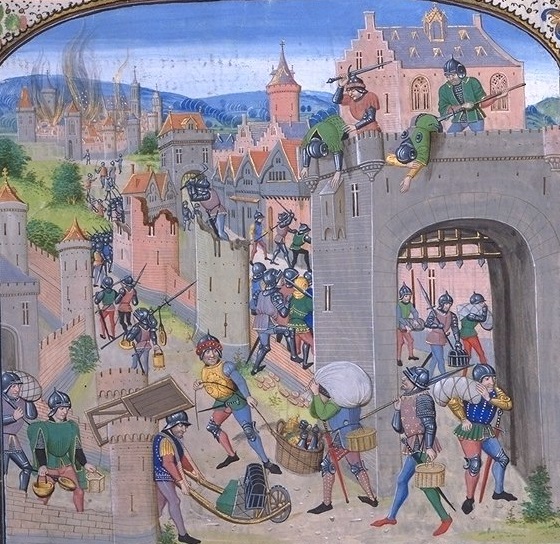
To save their city from further destruction, the townspeople could surrender. If the defenders did not surrender, the attackers had the right to kill every man, woman and child.
When Edward III beseiged Calis in 1387, he offered to spare the town if its burghers (leaders) surrendered. He demanded that they present themselves to him wearing nothing but their shifts, with nooses round their necks, carrying the keys to the city and castle.
8
